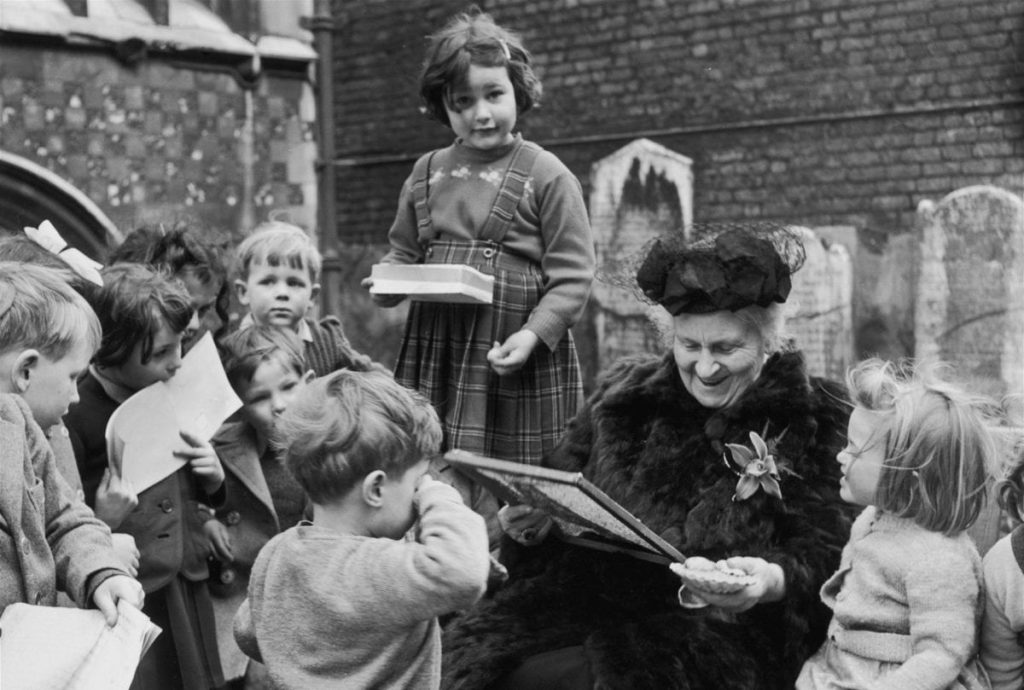He Montessori method is Maria Montessori's pedagogical proposal, based on the scientific observation of boys and girls: their various phases of development throughout life, their potential, their interests and their abilities.
Who was Maria Montessori?
Maria Montessori (1870-1952) was born in Chiaravalle, Italy. She was the first woman to practice medicine in Italy. Interested in the education of mentally retarded children, in 1901 she was appointed director of a psychiatric clinic associated with the University of Rome dedicated to the care of mentally retarded children. There he put into practice the idea of a scientific approach to education. In two years he managed to get eight children from the Institute to pass the official reading and writing aptitude test for normal children of the same age.

With the conviction that existing educational methods could be improved and in order to prepare for her new role as an educator, she studied Philosophy, Psychology, Education and Anthropology. The opportunity to put his ideas into practice came in 1907 when he was offered to form a nursery school for children between 2 and 6 years old in a housing complex in San Lorenzo, a very poor neighborhood in Rome, inhabited by families with illiterate working parents. The nursery was called Casa dei Bambini (Children's House). The success of this Montessori school sparked great interest in the Montessori Method throughout the world.
In 1909 Maria Montessori published her first book and began a world tour, in 1929 she founded the Association Montessori Internationale (AMI) to preserve the integrity of her legacy.
What are the main characteristics of this educational method?
The two main characteristics of the Montessori Method are:
- Children must be free to develop and learn at their own pace, in a stimulating environment of understanding and observation by the adult.
- The prepared environment that is provided to children: with order, beauty, adequate size, real, etc. where each element has been selected for a specific reason for its development.
The Montessori method is characterized by providing a prepared environment: orderly, aesthetic, simple, real, where each element has its reason for being in the development of children. The Montessori classroom integrates ages grouped into periods of 3 years, which naturally promotes socialization, respect and solidarity.
The prepared environment offers the child opportunities to do interesting, freely chosen work, which promotes long periods of concentration. Freedom develops within clear limits that allow children to coexist in the small society of the classroom.

Children work with scientifically designed concrete materials, which provide the keys to explore the world and develop basic cognitive skills. The materials are designed so that the child can recognize the error for himself and take responsibility for his own learning.
The adult is an observer and a guide, helping and encouraging the child in all his or her endeavors. It allows you to act, love and think for yourself, helping you develop confidence and inner discipline.
Montessori education covers all educational periods from birth to 18 years of age, providing an integrated curriculum.
What is the role of the educator in this process?
Every educator must “follow the child,” recognizing the evolutionary needs and characteristics of each age, and building a favorable environment, both physical and spiritual, to respond to those needs.
The child's development arises from the need to adapt to his environment: the child needs to make sense of the world around him and constructs himself in relation to that world.
What is the conception of the child within Montesori pedagogy?
Maria Montessori observed that the child passes from childhood to adulthood through 4 evolutionary periods called “Planes of development”.
The first Plane of Development begins with birth until the age of 6, it is characterized by the absorbent mind of the child, which takes or absorbs all aspects, good and bad, of the environment that surrounds it, language and culture. Secondly, from the ages of 6 to 12, the child has a reasoning mind, to explore the world with his or her imagination and abstract thinking. On the third level, from 12 to 18 years old, the adolescent has a humanistic mind eager to understand humanity and the contribution that he himself can make to society. At the last level of development, from the ages of 18 to 24, the adult explores the world with a specialist mind, appropriating his or her own place in it.




